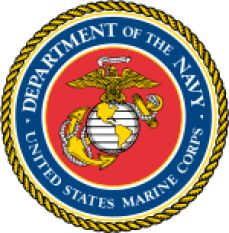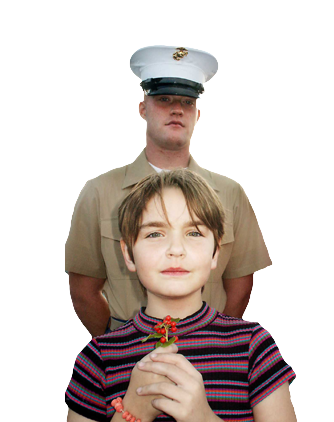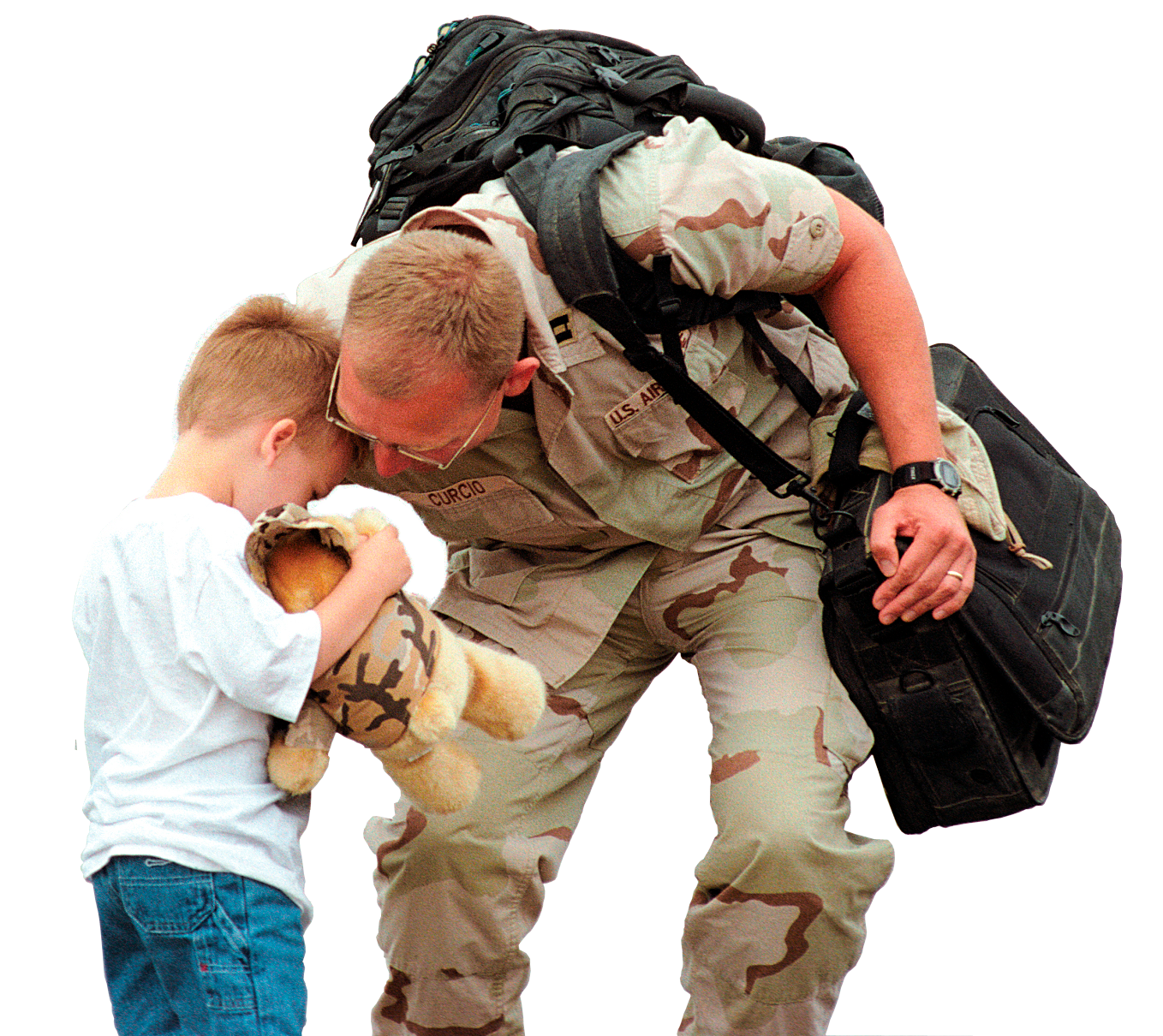Meet Your Military
- Details
- Hits: 1674
[caption id="attachment_4392" align="alignleft" width="276"] Army Col. John Ward, division operations officer, 1st Armored Division, United States Division – Center, inducts Staff Sgt. Jason Motes into the Order of St. George during a ceremony in Baghdad, Nov. 15, 2010. U.S. Army photo by Sgt. Kimberly Johnson[/caption] BAGHDAD – Army Staff Sgt. Jason Motes is now among an elite brotherhood within the United States Armor Association -- The Order of St. George, symbolizing bravery, dedication and decency. Motes, the future operations noncommissioned officer-in-charge with Company A, Division Special Troops Battalion, 1st Armored Division, United States Division –- Center, is one of very few staff sergeants who have been inducted into the order. “The Order of St. George, to me, is the tradition for [tank crewmen],â€Â said Motes, a Delaware, Ohio, native. “It symbolizes one’s long effort toward [excellence in] our branch. It’s a big honor.â€Â According to the U.S. Armor Association, the history of St. George dates back to about 280 A.D. St. George was a member of the Roman emperor’s mounted guard and was imprisoned, tortured and executed for standing up against the emperor, refusing an order to destroy all Christian churches and sacred writings. More than 1,000 years later, citizens of a small Italian village claim that St. George appeared and killed a dragon that was tormenting the town. It is that historic image of St. George that symbolizes the heroism and bravery of mounted warriors. Over the years, soldiers of several nations have given accounts of St. George appearing on battlefields to aid in their victories. St. George is the only saint portrayed as fighting mounted, and in 1986 the U.S. Armor Association established the order to recognize the best tankers and cavalrymen in the Army. “If anyone of the junior level of leadership deserves the Order of St. George, it is Staff Sgt. Motes,â€Â said Sgt. Maj. Dale Sump, the division master gunner with A Company, DSTB, and a Cherokee, Iowa, native. “Just because of the way he attacks a problem and how adaptable he is … that’s really what the Army needs right now.â€Â Sump, who nominated Motes for the honor, said the Order of St. George medallion is a new medal for staff sergeants. He said there were previously just three levels of the medallion -- bronze, silver and gold -- given only to senior enlisted soldiers and officers. During Operation Iraqi Freedom, Sump said, the Army established a new black medallion to recognize junior exceptional armor leaders. Motes’ family has a tradition of soldiering; his brother and father are both infantrymen. He said he wanted something different and chose the armor branch. “It’s a brotherhood,â€Â Motes said. “I am now a part of a very few people who have [been inducted into] the Order of St. George. Being knighted during the ceremony is a sign of respect for what I’ve done, what I could do, and what my leaders think I can do more of.â€Â Nov. 24, 2010: By Army Sgt. Kimberly Johnson- 1st Armored Division
Army Col. John Ward, division operations officer, 1st Armored Division, United States Division – Center, inducts Staff Sgt. Jason Motes into the Order of St. George during a ceremony in Baghdad, Nov. 15, 2010. U.S. Army photo by Sgt. Kimberly Johnson[/caption] BAGHDAD – Army Staff Sgt. Jason Motes is now among an elite brotherhood within the United States Armor Association -- The Order of St. George, symbolizing bravery, dedication and decency. Motes, the future operations noncommissioned officer-in-charge with Company A, Division Special Troops Battalion, 1st Armored Division, United States Division –- Center, is one of very few staff sergeants who have been inducted into the order. “The Order of St. George, to me, is the tradition for [tank crewmen],â€Â said Motes, a Delaware, Ohio, native. “It symbolizes one’s long effort toward [excellence in] our branch. It’s a big honor.â€Â According to the U.S. Armor Association, the history of St. George dates back to about 280 A.D. St. George was a member of the Roman emperor’s mounted guard and was imprisoned, tortured and executed for standing up against the emperor, refusing an order to destroy all Christian churches and sacred writings. More than 1,000 years later, citizens of a small Italian village claim that St. George appeared and killed a dragon that was tormenting the town. It is that historic image of St. George that symbolizes the heroism and bravery of mounted warriors. Over the years, soldiers of several nations have given accounts of St. George appearing on battlefields to aid in their victories. St. George is the only saint portrayed as fighting mounted, and in 1986 the U.S. Armor Association established the order to recognize the best tankers and cavalrymen in the Army. “If anyone of the junior level of leadership deserves the Order of St. George, it is Staff Sgt. Motes,â€Â said Sgt. Maj. Dale Sump, the division master gunner with A Company, DSTB, and a Cherokee, Iowa, native. “Just because of the way he attacks a problem and how adaptable he is … that’s really what the Army needs right now.â€Â Sump, who nominated Motes for the honor, said the Order of St. George medallion is a new medal for staff sergeants. He said there were previously just three levels of the medallion -- bronze, silver and gold -- given only to senior enlisted soldiers and officers. During Operation Iraqi Freedom, Sump said, the Army established a new black medallion to recognize junior exceptional armor leaders. Motes’ family has a tradition of soldiering; his brother and father are both infantrymen. He said he wanted something different and chose the armor branch. “It’s a brotherhood,â€Â Motes said. “I am now a part of a very few people who have [been inducted into] the Order of St. George. Being knighted during the ceremony is a sign of respect for what I’ve done, what I could do, and what my leaders think I can do more of.â€Â Nov. 24, 2010: By Army Sgt. Kimberly Johnson- 1st Armored Division
- Details
- Hits: 2571
 Air Force Capt. Rob Marshall prepares to ski down from the summit of Mt. Elbrus, the highest peak in Russia, with fellow airman and mountaineer Capt. Mark Uberuaga, now with the 55th Rescue Squadron, Davis-Monthan Air Force Base, N.M., after completing their first climb as part of the U.S. Air Force Seven Summits Challenge in July 2005. The challenge is an endeavor for Air Force members to carry the Air Force flag to the highest point on each continent and to be the first U.S. military group to conquer all seven peaks. Marshall is a member of the 8th Special Operations Squadron at Hurlburt Field, Fla. Courtesy photo[/caption] HURLBURT FIELD, Fla. – Two Air Force captains have set their sights to conquer Antarctica’s highest mountain.
Air Force Capt. Rob Marshall prepares to ski down from the summit of Mt. Elbrus, the highest peak in Russia, with fellow airman and mountaineer Capt. Mark Uberuaga, now with the 55th Rescue Squadron, Davis-Monthan Air Force Base, N.M., after completing their first climb as part of the U.S. Air Force Seven Summits Challenge in July 2005. The challenge is an endeavor for Air Force members to carry the Air Force flag to the highest point on each continent and to be the first U.S. military group to conquer all seven peaks. Marshall is a member of the 8th Special Operations Squadron at Hurlburt Field, Fla. Courtesy photo[/caption] HURLBURT FIELD, Fla. – Two Air Force captains have set their sights to conquer Antarctica’s highest mountain.- Details
- Hits: 4525
 MARINE CORPS AIR GROUND COMBAT CENTER, TWENTYNINE PALMS, Calif. – Afghan soldiers are in for a surprise when they meet their new instructor, Marine Corps Staff Sgt. Tricia McBride, the first female Marine assigned to advise host-nation forces in Afghanistan.
MARINE CORPS AIR GROUND COMBAT CENTER, TWENTYNINE PALMS, Calif. – Afghan soldiers are in for a surprise when they meet their new instructor, Marine Corps Staff Sgt. Tricia McBride, the first female Marine assigned to advise host-nation forces in Afghanistan.
- Details
- Hits: 2313
 Air Force reservist Maj. Lisa Reaver, center, poses with fellow mountain climbers Lauren Drietzler, left, and Heather Ruhle, after summiting Mount Kilimanjaro’s Uhuru Peak in Tanzania. Courtesy photo[/caption] JOINT BASE ELMENDORF-RICHARDSON, Alaska – Many people dream of traveling the world or conquering large obstacles.
Air Force reservist Maj. Lisa Reaver, center, poses with fellow mountain climbers Lauren Drietzler, left, and Heather Ruhle, after summiting Mount Kilimanjaro’s Uhuru Peak in Tanzania. Courtesy photo[/caption] JOINT BASE ELMENDORF-RICHARDSON, Alaska – Many people dream of traveling the world or conquering large obstacles.- Details
- Hits: 1589
 Peter Higgins, right, a safety and occupational health specialist for the 3rd Armored Cavalry Regiment deployed in Iraq, shows a soldier how to inspect a vehicle’s fire suppression system, Nov. 8, 2010. Higgins is widely known to soldiers as "Safety Pete" and spends his time educating and informing them on ways to develop safe working habits. U.S. Army photo by Staff Sgt. Garrett Ralston[/caption] BABIL PROVINCE, Iraq – A Humvee sits outside the laundry facility on Contingency Operating Site Kalsu here as other vehicles pass by.
Peter Higgins, right, a safety and occupational health specialist for the 3rd Armored Cavalry Regiment deployed in Iraq, shows a soldier how to inspect a vehicle’s fire suppression system, Nov. 8, 2010. Higgins is widely known to soldiers as "Safety Pete" and spends his time educating and informing them on ways to develop safe working habits. U.S. Army photo by Staff Sgt. Garrett Ralston[/caption] BABIL PROVINCE, Iraq – A Humvee sits outside the laundry facility on Contingency Operating Site Kalsu here as other vehicles pass by.





